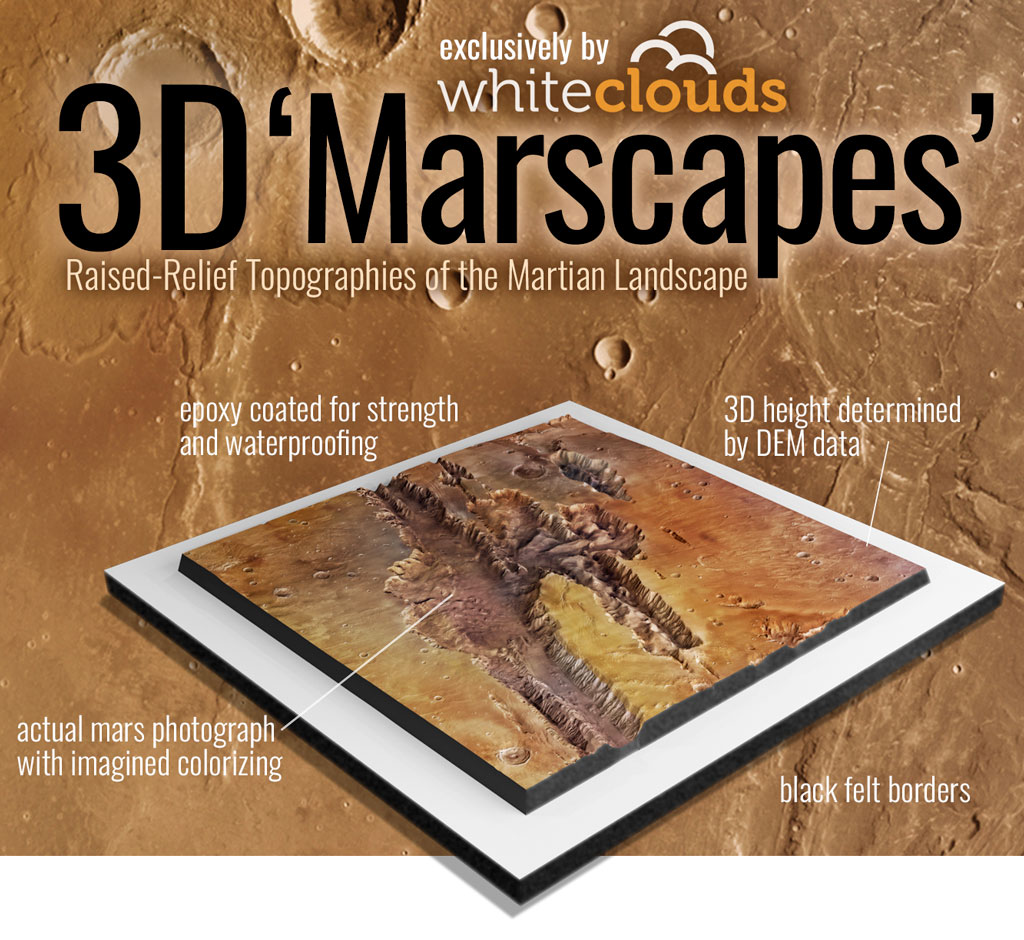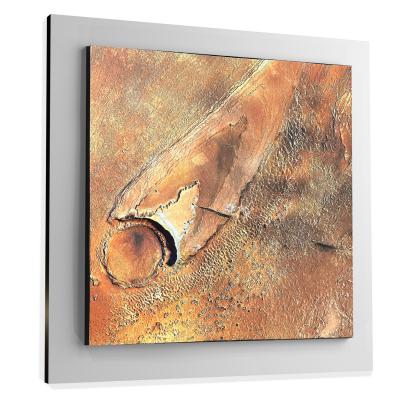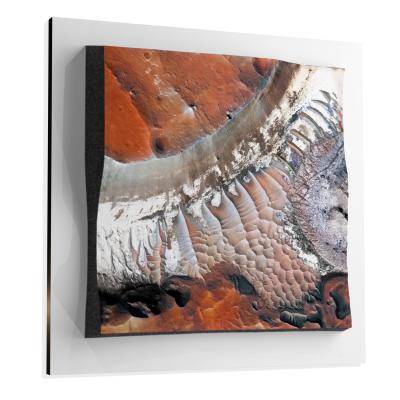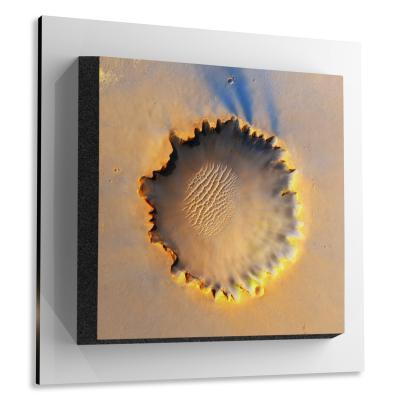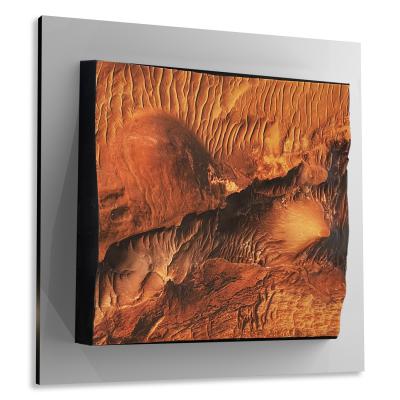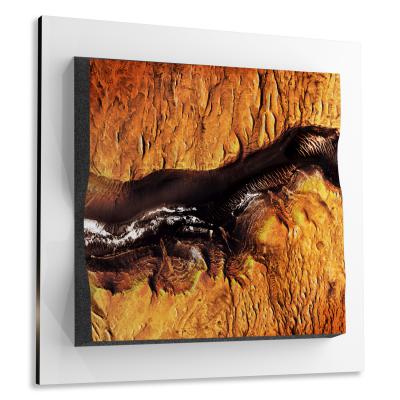Nili Patera
Nili Patera
We Build Custom 8K Mars Canvas Prints of Nili Patera
Did you know we make
custom
8K Mars Canvas Prints

and
3D Marscapes

Nili Patera
Nili Patera, a geologically rich and captivating feature on the Martian surface, has been the subject of significant scientific research and exploration. It stands as one of the most studied locations on Mars, drawing attention for its complex geological landscape and the mysteries that it harbors.
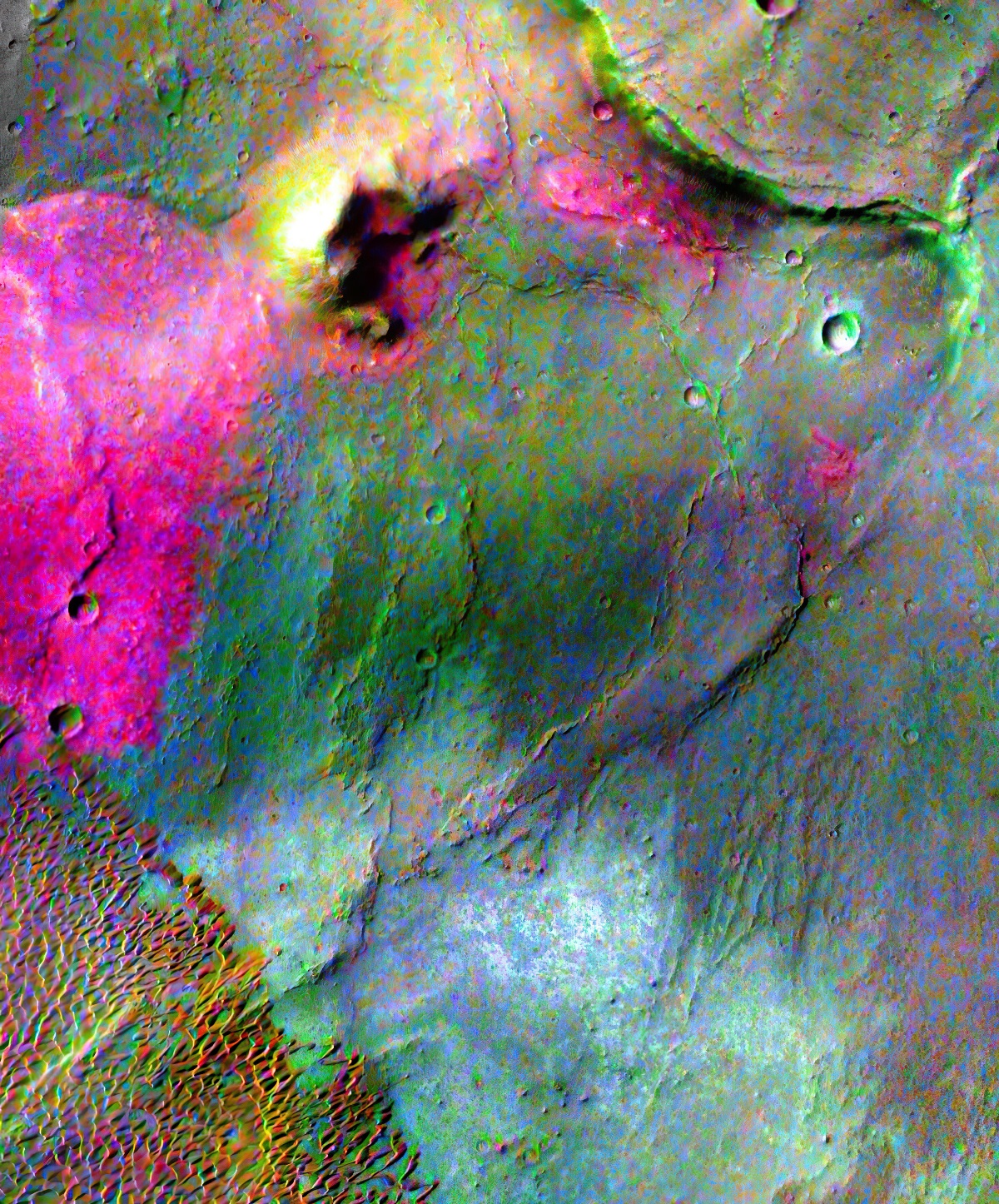 Nili Patera
Nili Patera
Geographical Location
Nili Patera is geographically positioned within the expansive Syrtis Major Planum, at coordinates approximately 8.4°N latitude and 67.5°E longitude. The Syrtis Major Planum itself is an enormous, dark albedo feature—a surface area with different reflective properties—that dominates a considerable portion of Mars’ northern lowlands. Covering an area with a diameter stretching to nearly 50 kilometers, Nili Patera is a caldera-like formation and just one of several similar features found in this intriguing Martian region. Its geographical setting places it in close proximity to a variety of compelling geological and geomorphological features. These include extensive dune fields, remnants of ancient lava flows, and other volcanic constructs, such as shield volcanoes and fissure vents. This makes Nili Patera an indispensable site for scientific exploration, serving as a natural observatory for diving into both Mars’ tumultuous geological history and its ongoing dynamic processes.
Advertisement
Sample Marscapes
Geological Composition
Nili Patera boasts an intricate geological composition that includes evidence of both volcanic and sedimentary processes. The caldera itself is believed to be the result of multiple explosive volcanic events, which have led to a geological stratification that includes both basaltic and andesitic rock types. Advanced spectroscopic studies have shed light on a wide array of minerals found in the region, among them olivine and pyroxene, which are typically formed through the crystallization of magma. Furthermore, the spectroscopic data has shown the presence of hydrated minerals like gypsum and various sulfates, which strongly point towards periods of aqueous alteration in the region’s history. This mix of rock types and minerals provides a rich tapestry of information, allowing scientists to unravel the complex geological processes that have shaped Nili Patera over time.
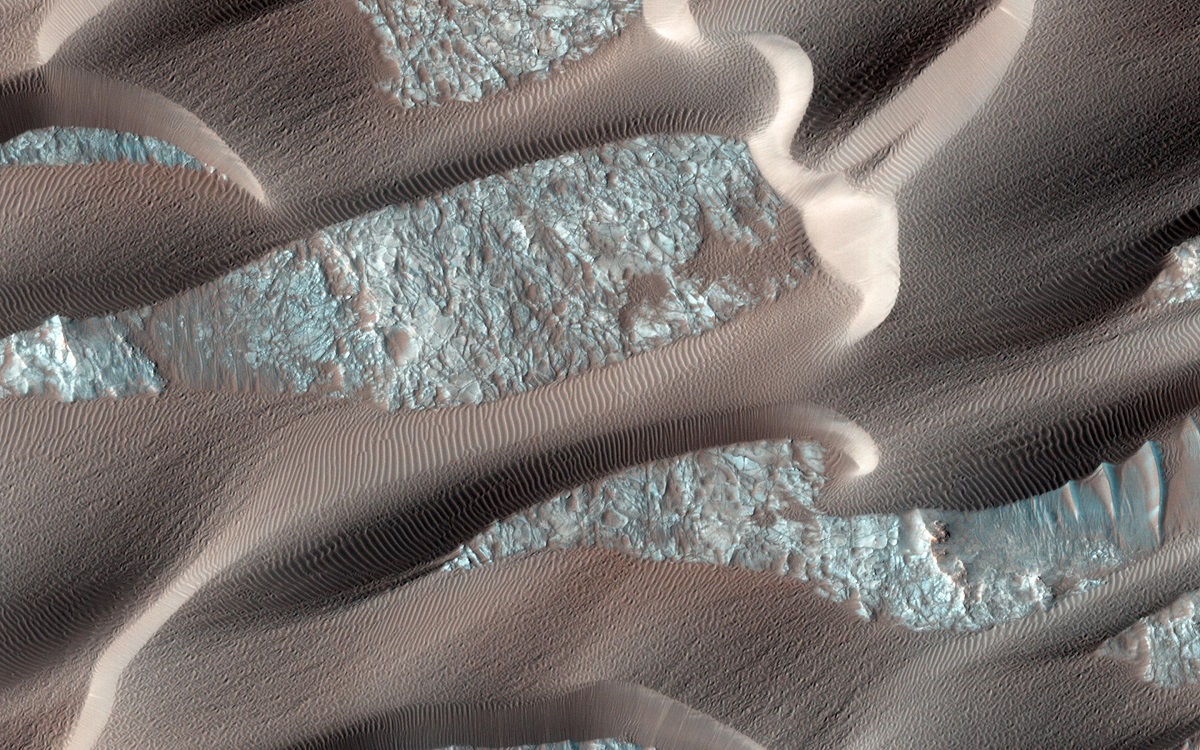 Continual Dune and Ripple Migration in Nili Patera
Continual Dune and Ripple Migration in Nili Patera
Significant Discoveries
Volcanic Activity
One of the most significant scientific discoveries related to Nili Patera is the evidence for relatively recent volcanic activity. This has fueled the ongoing debate about Mars’ current geological activity, suggesting that the planet might not be entirely dormant. The implications of a geologically active Mars could be groundbreaking for our understanding of the planet’s interior processes.
Dynamic Sand Dunes
Another area of considerable scientific interest is Nili Patera’s dynamic dune fields, which are among the most active and mobile dune systems on the Martian surface. These shifting sands provide an invaluable natural laboratory for understanding aeolian (wind-driven) processes on Mars, offering clues about existing wind patterns, sediment transport mechanisms, and the planet’s current climatic conditions.
Mineralogical Evidence of Water
The presence of hydrated minerals and sulfates in Nili Patera has generated significant scientific enthusiasm. These minerals strongly indicate that the region has undergone episodes of aqueous alteration, possibly featuring standing or flowing water in its distant past. This finding has far-reaching implications, not just for our understanding of Mars’ geological history but also for the ongoing search for potential habitability and astrobiological investigations.
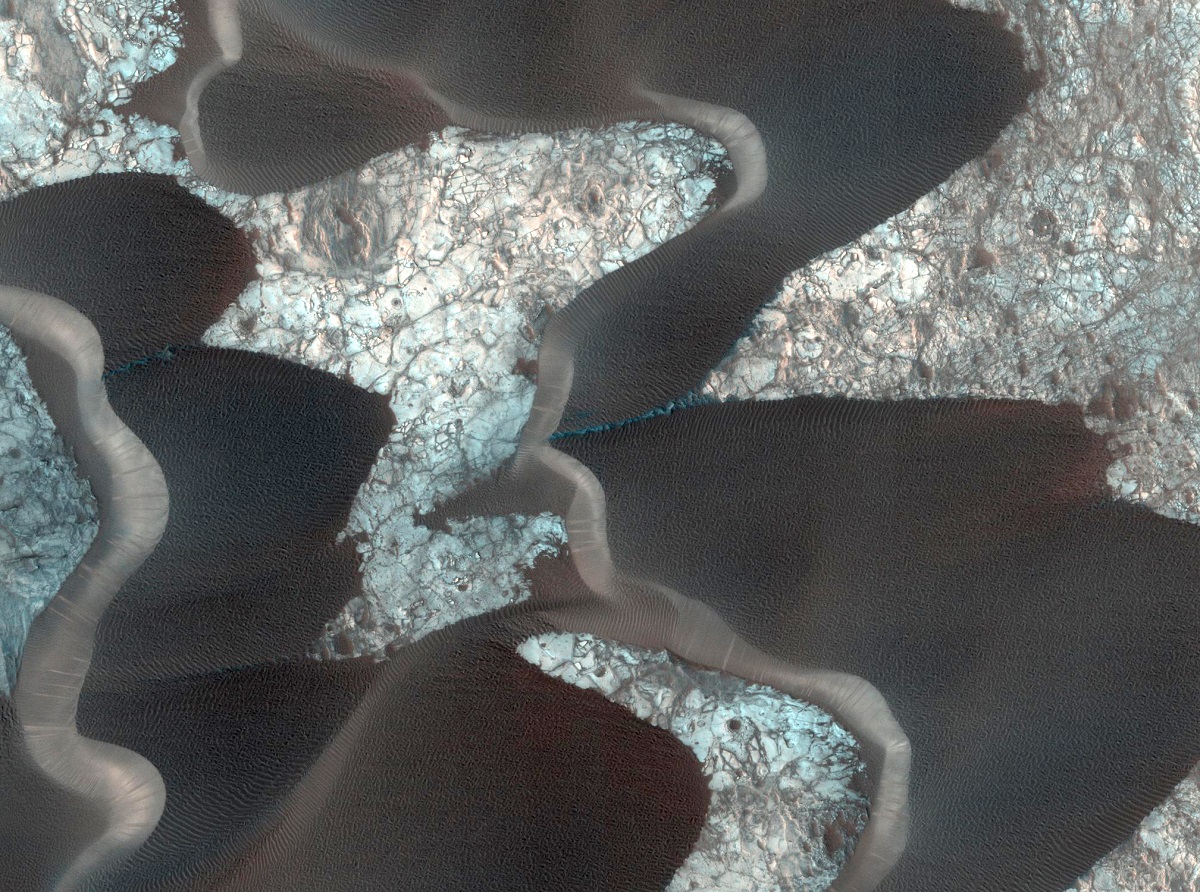 Sand Dunes in Nili Patera Caldera
Sand Dunes in Nili Patera Caldera
Scientific Missions
Mars Reconnaissance Orbiter (MRO)
The Mars Reconnaissance Orbiter has played an invaluable role in shaping our current understanding of Nili Patera. Through high-resolution imaging and advanced spectroscopic analyses, MRO has provided a wealth of data that has helped in the identification of various mineral types and in assessing the intricate surface morphology of the region.
Mars Express
The European Space Agency’s Mars Express has also been instrumental in our comprehension of Nili Patera. The spacecraft’s thermal emission data has added another layer of information, offering insights into the compositional diversity and the thermal properties of this geologically complex region.
Future Missions
Nili Patera remains at the forefront as a prime candidate for upcoming missions aimed at exploring Martian geology, studying climate evolution, and assessing the planet’s potential for sustaining life.
Geomorphological Features
The geomorphological features of Nili Patera are as diverse as they are revealing. The caldera structure itself offers signs of a complex, explosive volcanic history. Surrounding it are heavily eroded crater walls, which may hold clues to ancient weathering processes. Moreover, the extensive dune fields that sweep across the caldera floor not only signify current dynamic processes but also allow for the study of past erosional and depositional events. Together, these various geomorphological features offer a comprehensive lens through which to study a range of processes—from volcanic to erosional to sedimentary—that have contributed to shaping the Martian landscape over its long history.
Nili Patera serves as a microcosm of Mars’ intricate and storied geological history, providing scholars and scientists with an opportunity to examine a wealth of features and phenomena in a single location. Its complex geological makeup, rich mineralogical diversity, and distinctive geomorphological characteristics make it a prime location for current and future Martian exploration. It holds the promise of unlocking secrets to Mars’ geological activity, climate history, and perhaps even the planet’s potential to have harbored life.
Check out our 3D Mars Learning Center for more information on Mars and Nili Patera. You can also learn more at: NASA Mars Exploration.
More About Mars
Contact us today to learn more about our 3D services and how we can help you achieve your goals.
